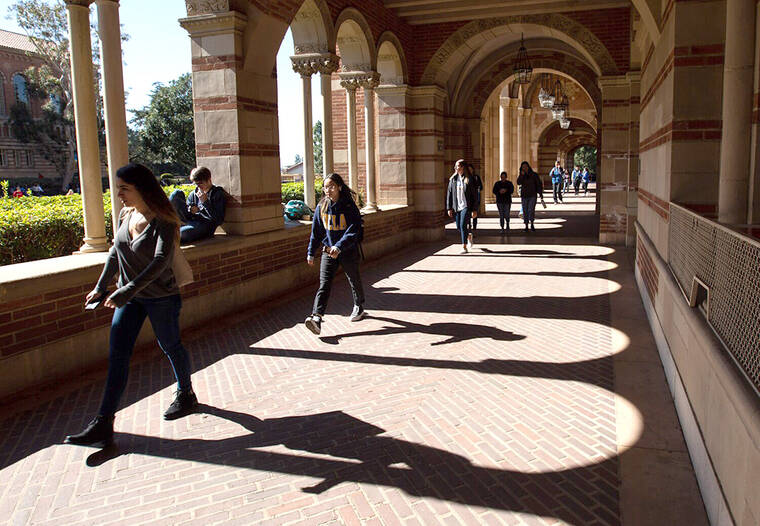I was homeless in college. California can do more for students who sleep in their cars
When I first came to California to apply for graduate school in the late ’80s, I drove to Santa Monica and parked my car. There were more homeless people than I’d ever seen, living here in tents on the grass by the ocean under palm trees.
Before college, as a result of poverty, I’d slept in my car or in the woods. Then, as a community college student in Arizona, I lived in my car when I was between apartments. But I had never been to a place where sleeping outdoors seemed to be a way of life for that many people.
That remains true today — but more so. California has an unhoused population of more than 181,000, many of them students. An estimated one in five of the state’s 2 million community college students are unhoused; overall, students are more likely to experience homelessness if they are LGBTQ+, Black or Indigenous. Colleges here have grappled with how best to support students on campus who live in their cars.
The prevalence of students in California who have to sleep in their vehicles every night shines a harsh light on the state’s housing crisis. It also raises an important question: What responsibility do the government and schools have to support and protect these young people who will inherit our future?
Like many students, when I was homeless in college, I considered it a temporary situation. I was lucky to be right. By the time I reached California, I did have enough money to get an apartment, largely because L.A. apartments were cheap in the ’80s. But I’ve never been able to shake my discomfort when people express judgment or annoyance toward homeless people simply for existing.
It’s a condition that can happen to anyone: Maybe you have lost control of your finances, or maybe you’ve never had control, or maybe you do but simply can’t cover the inflated cost of housing. Once you are living on the streets or in a car, the journey to a stable life of paying bills, getting a good job and having a home is challenging, especially for those who didn’t receive an education in financial literacy from their families or anyone else.
When people talk about how building generational wealth requires financial skills, I think that, from my experience, just getting away from living paycheck to paycheck takes financial skills. Breaking free of that cycle can feel impossible when it has swallowed your whole life.
I write and work in publishing in Los Angeles, and when I meet with literary people who attended USC, UCLA or Ivy League schools, I realize that many of them were born into the room I’ve been climbing the ladder to get into all my life. Many have never looked around to see the people who struggled to get here — those of us whose parents didn’t or couldn’t support us through school, those of us who spent nights in our cars because we wanted to go to college and be part of changing the world too.
I wanted to tell one of these stories in my forthcoming novel, “Under a Neon Sun.” It follows Mia, a student at Pierce College who lives in her car and relies on school Wi-Fi, computers, showers and other resources. Then the pandemic hits and the campus closes. Mia’s story has hope. But that can be scarce in today’s Los Angeles, where first and last payments on an apartment can approach $4,000. How can a college student save that much if they can afford to live only in a car or tent? How are they then supposed to pursue an education without access to stable housing?
At the very least, community college students who sleep in their cars should be entitled to safe, well-lighted lots where they can park all night without fear of break-ins, towing or fines. Long Beach City College has implemented such a program at a low cost to the school and without major reported safety or disciplinary issues. In addition to providing students with inflatable mattresses, hygiene products, showers and internet, the program works to place them in longer-term housing. This stands in contrast to schools that ticket or disperse houseless students who park on campus.
The 116 community colleges in California should consider how many of their students are living in their cars and find ways to connect those people to resources, whether that’s a free laptop program financed by Silicon Valley or, most crucially, assistance to find affordable housing.
California can do better for its unhoused students. We can start with safe parking and in the long term expand access to housing on or near campus. If a student wants to go to college badly enough that they are willing to live in their car, they might become the kind of person who starts a press on the West Coast that publishes more than a thousand books in 30 years and creates a dozen jobs for others.
Think what thousands more of us could do with a little help. In that light, is a safe place to sleep too much to ask for?
(Kate Gale is the publisher of Red Hen Press and the author of “Under a Neon Sun” from Three Rooms Press.)


